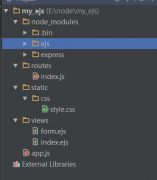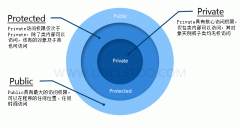JS面向对象基础讲解(工厂模式、构造函数模式、原型模式、混合模式、动态原型模式)(2)
混合模式(原型模式 + 构造函数模式)
function Blog(name, url, friend) {
this.name = name;
this.url = url;
this.friend = friend;
}
Blog.prototype.alertInfo = function() {
alert(this.name + this.url + this.friend);
}
var blog = new Blog('wuyuchang', 'http://tools.jb51.net/', ['fr1', 'fr2', 'fr3']),
blog2 = new Blog('wyc', 'http://**.com', ['a', 'b']);
blog.friend.pop();
blog.alertInfo(); // wuyuchanghttp://tools.jb51.net/fr1,fr2
blog2.alertInfo(); // wychttp://**.coma,b
混合模式中构造函数模式用于定义实例属性,而原型模式用于定义方法和共享属性。每个实例都会有自己的一份实例属性,但同时又共享着方法,最大限度的节省了内存。另外这种模式还支持传递初始参数。优点甚多。这种模式在ECMAScript中是使用最广泛、认同度最高的一种创建自定义对象的方法。
动态原型模式
动态原型模式将所有信息封装在了构造函数中,而通过构造函数中初始化原型(仅第一个对象实例化时初始化原型),这个可以通过判断该方法是否有效而选择是否需要初始化原型。
function Blog(name, url) {
this.name = name;
this.url = url;
if (typeof this.alertInfo != 'function') {
// 这段代码只执行了一次
alert('exe time');
Blog.prototype.alertInfo = function() {
alert(thia.name + this.url);
}
}
}
var blog = new Blog('wuyuchang', 'http://tools.jb51.net'),
blog2 = new Blog('wyc', 'http:***.com');
可以看到上面的例子中只弹出一次窗,'exe time',即当blog初始化时,这样做blog2就不在需要初始化原型,对于使用这种模式创建对象,可以算是perfect了。
此博文参考《JavaScript高级程序设计》第3版,但语言都经过简化,例子也重写过,如果有什么不懂的地方请留言回复,作者将更新博客。






